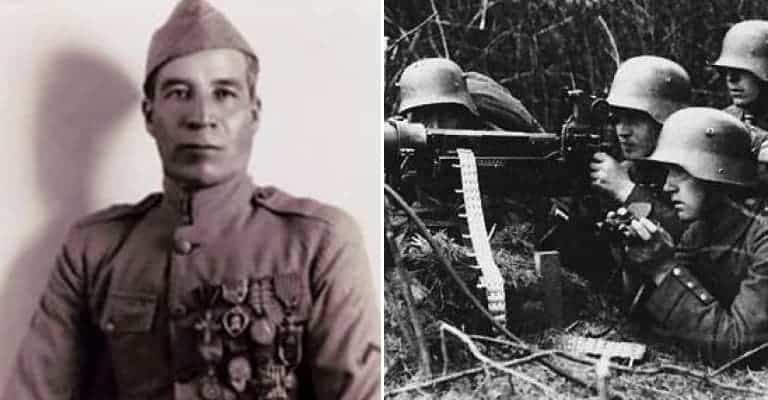Marcelino Serna, one of the United States’ greatest heroes of World War I, was an undocumented Mexican immigrant. Throughout his life, he was one of America’s most overlooked heroes of the Great War, notwithstanding that he was Texas’ most decorated soldier from that conflict. He was also an illegal immigrant, who had only signed up to enlist in the US Army in order to avoid getting deported back to Mexico.
Serna was born into a dirt poor family in Chihuahua, Mexico, on April 26th, 1896, and when he was 20 years old, he decided to seek a brighter future north of the border in the United States. So he crossed the Rio Grande in 1916, and made it to El Paso, Texas, but speaking no English, all he could manage were a series of low-paying jobs. So he left the Lone Star Republic, and made his way to Colorado, where he found a better paying gig picking sugar beets in a farm near Denver. It was backbreaking work, but the pay was better than anything he had encountered before, so he kept at it.

Serna Enlisted in the US Army to Avoid Getting Deported
While Serna was sweating it out and toiling in the fields, the United States, whose president, Woodrow Wilson, had been reelected in 1916 with the campaign slogan “He Kept Us Out of the War!“, found itself getting drawn ever closer into the conflict. America had almost joined the fray in 1915, when a German U-boat sank the ocean liner Lusitania, leading to the death of 128 Americans, but war was avoided when the Germans eased off on the submarine warfare.
By 1917, Germany was desperate, and to knock out Britain, it announced unrestricted submarine warfare against all ships approaching British waters. That directly challenged America’s position that freedom of the seas should be absolute for neutrals. Between that and a harebrained scheme by a German Foreign Office official, Arthur Zimmerman, to get Mexico to declare war on the US in exchange for the territories lost in the Mexican-American War, war was declared against Germany in April of 1917. With war came conscription, and as officials fanned out across the country to ensure that the draft was properly enforced, Marcelino Serna got entangled with them.
During a trip from his workplace in the beet farm to nearby Denver, he was detained by federal enforcement authorities who were checking the legal status of men of draft age. He ended up locked up in a local jail while officials tried to verify his immigration status and eligibility for the draft. He had no legal status, so after seven days behind bars, he got tired of waiting, and in order to avoid getting deported back to Mexico, he volunteered to enlist in the US Army.

Despite hardly speaking any English, he managed to make it through basic training. He was then sent to join the American Expeditionary Force in France, and was assigned to Company B, 355th Infantry Regiment, in the 89th Division. Once he got to the trenches, his unit realized that he was not an American citizen, and his company commander informed Serna that as a Mexican national, he did not have to be there. So he was offered a discharge. Although it would have been quite understandable had Serna taken it, considering it was not his war but that of a country he had only lived in for less than a year, he declined. A stand-up guy, he chose to stick with his comrades.
That set up the stage for Serna’s moment to shine, which came in the run-up to America’s moment to shine in the Great War: the Meuse-Argonne Offensive. By 1918, America’s allies, the Entente Powers of Britain and France, were exhausted by years of ceaseless bloodshed. The British were nearly bankrupt, while the French were bankrupt and demoralized, their army had recently staged a widespread mutiny after one bungled offensive too many. Fresh American troops such as Marcelino Serna, full of fight and not yet worn out and dispirited by the tragedy of trench warfare, were to tip the balance in the Entente’s favor.

